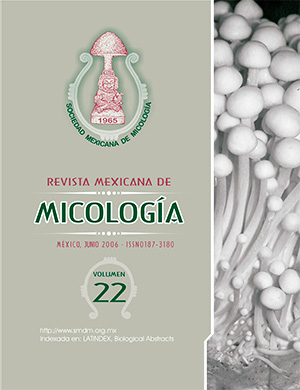Fluoranthene degradation induced morphological and functional changes in Dipodascus ingens biotypes
DOI:
https://doi.org/10.33885/sf.2006.3.965Keywords:
Dipodascus ingens, chitin synthase activity, strains, different phenotypes, flouranthene, polluted sedimentsAbstract
In recent years, bioremediation researches pointed out the increasing yeast populations
associated with industrial discharge, and the occurence of physiological and morphological variations
correlated with the pollution levels. So, the aims of this study were to characterize the yeasts with
aromatic hydrocarbon degradation ability and to report the dimorphic transition, aggregation profiles
and enzyme patterns during fluoranthene (FA) transformation in cultures A
significant variability in cell forms and pseudomycelium development were observed in the isolated
strains; the chitin synthase activity and chitin content confirmed the differences between the biotypes;
moreover, pseudohyphae formation and aggregation profiles were dominant features in the aromatic
hydrocarbon cultures. This study joined the strains in groups, particular traits were found for D1-D3 and
D2-D4 biotypes, and the variability was considered an adaptative response to adverse habitats.
existed in cell and mycelial phases, and this plasticity ensured a better competitiveness in substrate
degradation. Yeast phase dominated in liquid substrates whereas mycelial forms colonized solid ones,
being this trait an advantage to transform toxicants, as most of them remained as particles in the
degradation experiments.
Downloads
Downloads
How to Cite
Issue
Section
License
Copyright notice
Open access policy
The authors who publish in this journal accept the following conditions:
In accordance with copyright laws, Scientia Fungorum recognizes and respects the authors’ moral rights, as well as the ownership of property rights, which will be transferred to the journal for dissemination in open access. Scientia Fungorum does not charge for submission and processing of articles for publication.
All the texts published by Scientia Fungorum –with no exception– are distributed under a Creative Commons License Attribution-NonCommercial-ShareAlike 4.0 International (CC BY-NC-SA 4.0), which allows third parties to use the publication as long as the work’s authorship and its first publication in this journal are mentioned.
The authors can enter into independent and additional contractual agreements for the nonexclusive distribution of the version of the article published in Scientia Fungorum (for example include it into an institutional repository or publish it in a book) as long as it is clearly and explicitly indicated that the work was published for the first time in Scientia Fungorum.
For all the above, the authors shall send the form of Letter-transfer of Property Rights for the first publication duly filled in and signed by the author(s). This form must be sent as a complementary file.
This work is licensed under a Creative Commons Attribution-NonCommercial-ShareAlike 4.0 International license (CC-By-NC-SA 4.0).



